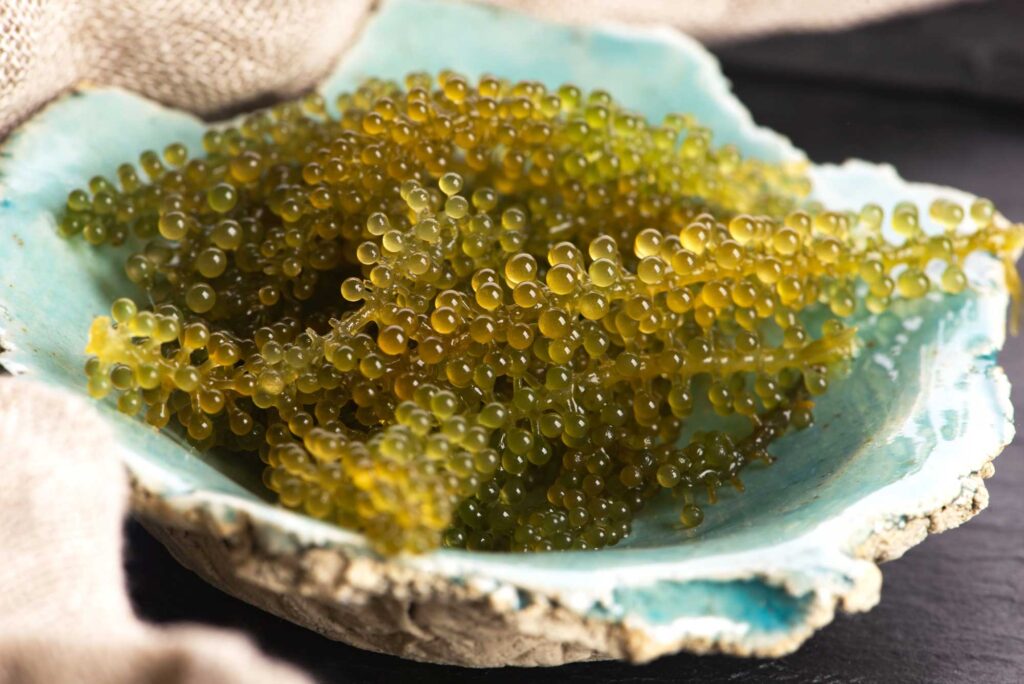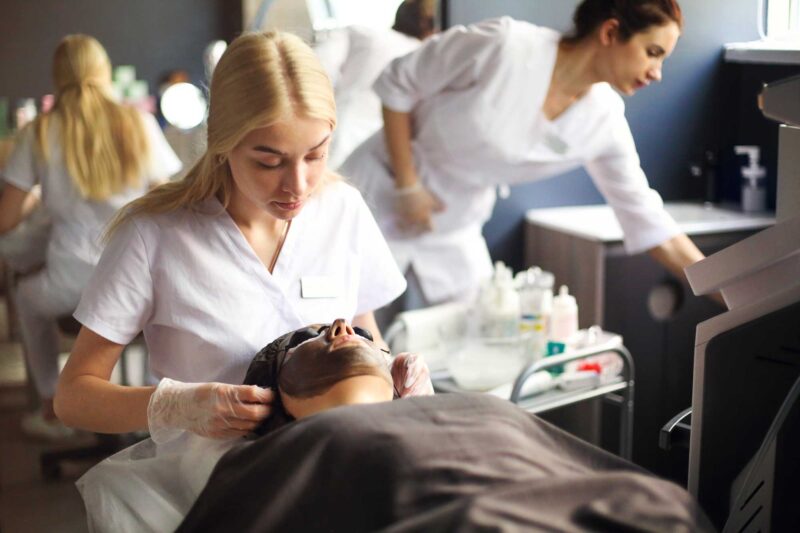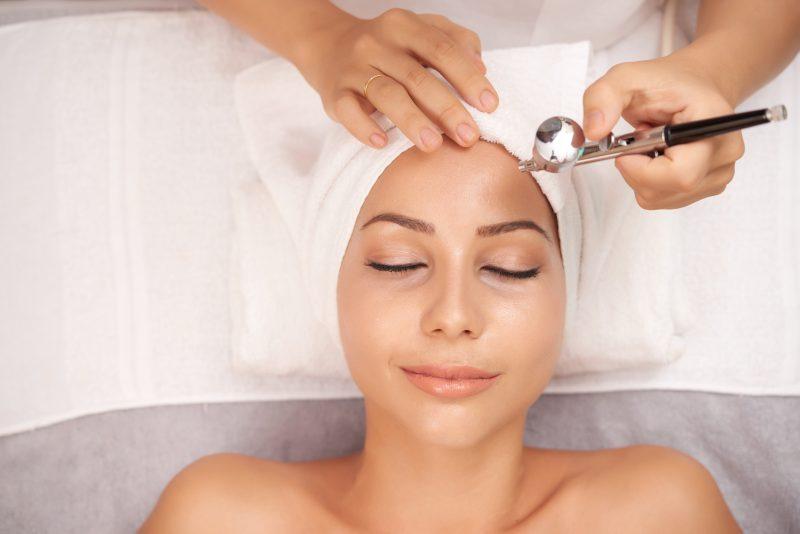Professional Skincare, Salon Biz, Skincare
From Ocean to Oasis: How Sea Grapes Are Elevating Spa Skincare
Tucked away in the warm, shallow coastlines of Southeast Asia and the South Pacific is a botanical gem that’s making serious waves in the skincare world: sea grapes. No, not an underwater fruit or mythical marine delicacy—though they certainly look the part. These little green pearls are actually a type of edible seaweed known as Caulerpa lentillifera, and they’re rewriting the rules of luxury spa treatments.
While caviar facials and gold leaf masks once stole the spotlight, a new kind of opulence is rising from the sea floor. Spa professionals, skincare formulators, and wellness enthusiasts are turning to sea grapes not just for their visual appeal, but for their ability to nourish, hydrate, and visibly improve skin. And unlike many luxury ingredients, sea grapes come with an eco-conscious edge, making them a sustainable treasure as well.
Let’s take a closer look at what sea grapes really are, how they’re harvested, and why they’re the latest must-have ingredient in high-end spa rituals.
What Exactly Are Sea Grapes?
Sea grapes, also called green caviar or umi-budō in Japan, are part of the Caulerpa genus of green algae. Unlike other types of seaweed that fan out into blades or flat ribbons, sea grapes form little clusters of round, bead-like structures that resemble a tiny string of emerald pearls. These beads are filled with water and natural compounds, and when eaten, they burst on the tongue with a mild, salty pop.
They thrive in tropical marine environments and are especially popular in Okinawan cuisine, where they’re praised not only for their taste but for their health benefits. But the same antioxidant-rich profile that makes them a superfood also makes them a skincare powerhouse.
Rich in minerals, polysaccharides, amino acids, and vitamins like A and C, sea grapes are a natural hydrating agent and skin reviver. They’re also packed with omega fatty acids and plant-based collagen analogs that support the skin’s natural barrier and elasticity.
Harvesting Sea Grapes with Care
Unlike wild-harvested seaweed that can be disruptive to delicate marine ecosystems, sea grapes are typically cultivated in coastal aquafarms using sustainable methods. Farmers grow them in brackish or saltwater ponds that replicate the algae’s natural habitat, allowing for year-round production with minimal environmental impact.
The process is surprisingly low-tech and low impact. After several weeks of growth, the mature strands are gently collected by hand, rinsed to remove impurities, and either prepared for culinary use or processed for cosmetic applications. Since sea grapes are delicate and perishable, those destined for skincare are often dried or cold-extracted immediately to preserve their beneficial compounds.
This eco-friendly farming model is what gives sea grapes a strong advantage over other marine-based ingredients. They’re renewable, require no fertilizers or pesticides, and leave behind virtually no carbon footprint. In an industry increasingly scrutinized for its environmental toll, sea grapes offer luxury without compromise.
Sea Grapes Meet Skincare
So, what do sea grapes actually do for the skin? The better question might be—what don’t they do.
Hydration is one of their top superpowers. Sea grapes are rich in polysaccharides, which act like natural humectants, drawing moisture into the skin and holding it there. This makes them an excellent choice for hydrating treatments, especially for dry, flaky, or mature skin types.
But the benefits don’t stop at moisture. Sea grapes contain an impressive concentration of minerals like calcium, magnesium, and potassium, which are essential for healthy skin function and regeneration. They also help to strengthen the skin barrier and protect against environmental aggressors like pollution and UV damage.
Their antioxidant content—particularly vitamin C and chlorophyll—helps reduce oxidative stress and neutralize free radicals, which contribute to premature aging. This makes sea grapes a valuable ally in anti-aging treatments, where plumpness, brightness, and elasticity are key goals.
On top of all this, the small molecular size of sea grape extracts allows them to penetrate easily into the skin, delivering nutrients where they’re needed most without causing irritation. That’s why estheticians and skincare brands alike are embracing sea grapes for their ability to offer visible results with a feather-light feel.
The Spa Experience, Upgraded
At high-end spas, sea grape-based treatments are making a splash as part of a new wave of sea-inspired wellness rituals. Their unique texture and soothing properties lend themselves beautifully to facials, body wraps, massage treatments, and even post-procedure recovery.
A typical sea grape facial begins with a gentle cleanse and exfoliation, followed by a concentrated sea grape mask or serum designed to infuse the skin with hydration and nutrients. Because of their anti-inflammatory and calming nature, sea grape-infused products are also ideal after microdermabrasion, chemical peels, or dermaplaning.
Some spas go a step further by incorporating fresh or rehydrated sea grapes directly into treatments, massaging them onto the skin for a luxurious, tactile experience. In body treatments, sea grape extracts are blended with marine mud or algae to help tone, detoxify, and firm the skin—all while delivering a relaxing, ocean-scented escape.
The result? Skin that looks dewy, rested, and revitalized after just one session.
Why Spas and Skincare Brands Love Them
Aside from their obvious performance benefits, sea grapes tick several boxes for modern beauty professionals. They’re vegan, ocean-derived, and align with clean beauty standards thanks to their minimal processing and absence of synthetic chemicals. They’re also highly adaptable—equally at home in a silky serum, creamy mask, or lightweight gel.
Skincare formulators love that sea grape extract plays well with others. It pairs effortlessly with hyaluronic acid, peptides, niacinamide, and botanical oils, amplifying hydration and nourishment in multi-ingredient products.
And because sea grapes are novel yet familiar (thanks to the growing popularity of Asian cuisine and culture), they add an element of storytelling and curiosity to spa menus and skincare packaging. This boosts appeal not just with seasoned skincare lovers but with wellness tourists and beauty explorers seeking something fresh and transformative.
A Beauty Trend Backed by Nature and Science
In 2021, a Japanese study published in the Marine Drugs journal found that sea grape extracts had both antioxidant and skin barrier-enhancing properties, reinforcing what spa professionals had already observed anecdotally. The study concluded that compounds in Caulerpa lentillifera could inhibit moisture loss and support collagen synthesis—key factors in maintaining youthful-looking skin.
And it’s not just hype. A growing number of indie and luxury brands alike are including sea grapes in their “blue beauty” lines, a movement focused on sustainably harvested marine ingredients. Spas are catching on quickly, offering exclusive treatments centered around this one-of-a-kind seaweed.
According to Spa Executive Magazine, marine-based spa treatments have risen in popularity by over 40% in the past five years—a trend largely driven by consumer demand for natural, results-driven alternatives to synthetic skincare. Sea grapes sit at the intersection of all those desires: effectiveness, purity, and indulgence.
Spa Executive Magazine
Who Should Try Sea Grape Skincare?
Sea grape-based treatments are suitable for nearly all skin types, but they’re particularly beneficial for:
- Dehydrated or dry skin that lacks bounce and elasticity
- Aging or mature skin showing signs of fine lines and dullness
- Sensitive skin, due to their calming and non-irritating profile
- Post-treatment or compromised skin, needing gentle repair
And while they’re luxurious, sea grapes don’t demand a celebrity-level budget to experience. Many spas offer sea grape treatments at a premium but still accessible tier, and over-the-counter serums and sheet masks containing sea grape extract are available at mid-range price points.
Still, the spa experience—complete with guided massage techniques, professional application, and ambient ocean-inspired atmospheres—remains the most indulgent way to enjoy this marine miracle.
FAQs
Are sea grapes the same as caviar?
No, sea grapes are a type of edible seaweed—not fish eggs. Their nickname “green caviar” comes from their resemblance in shape and texture.
Can I use sea grape skincare at home?
Absolutely. Look for products that list Caulerpa lentillifera extract on the label. They’re typically found in hydrating serums, sheet masks, or gel-based moisturizers.
Are sea grapes safe for sensitive skin?
Yes. Because they’re naturally gentle and rich in skin-calming compounds, sea grape products are generally safe for sensitive or reactive skin types.
Do they smell like seaweed?
Not strongly. Most sea grape extracts are refined to reduce any natural marine odor, and many formulations pair them with light botanical or citrus scents.
Are sea grapes sustainably harvested?
Yes. Most commercial sea grape farms operate using eco-friendly, aquaculture-based models that support marine health and provide local economic benefits.
The Ocean’s Gift to Skincare
When we think about what makes a skincare ingredient feel truly luxurious, it’s not always about gold flakes or rare flower petals. Sometimes, it’s about how it feels on the skin, how it performs, and how it connects us back to nature. Sea grapes check every one of those boxes.
They offer hydration, healing, and harmony with the environment—all while elevating the sensory experience of a spa visit. As demand grows for sustainable and effective skincare, sea grapes are poised to become more than just a trend—they’re becoming a signature of thoughtful beauty.
So, the next time you’re booking a spa treatment or exploring a new serum, consider this: the secret to luminous skin may be growing quietly beneath the sea, waiting to transform your next beauty ritual.





